This Brooklyn brownestone has retained period details dating back to the 1890s, such as the beautiful wooden scrollwork in the living room, plaster moulding and a central dumbwaiter. But its main attraction is the far-out art collection of its owner
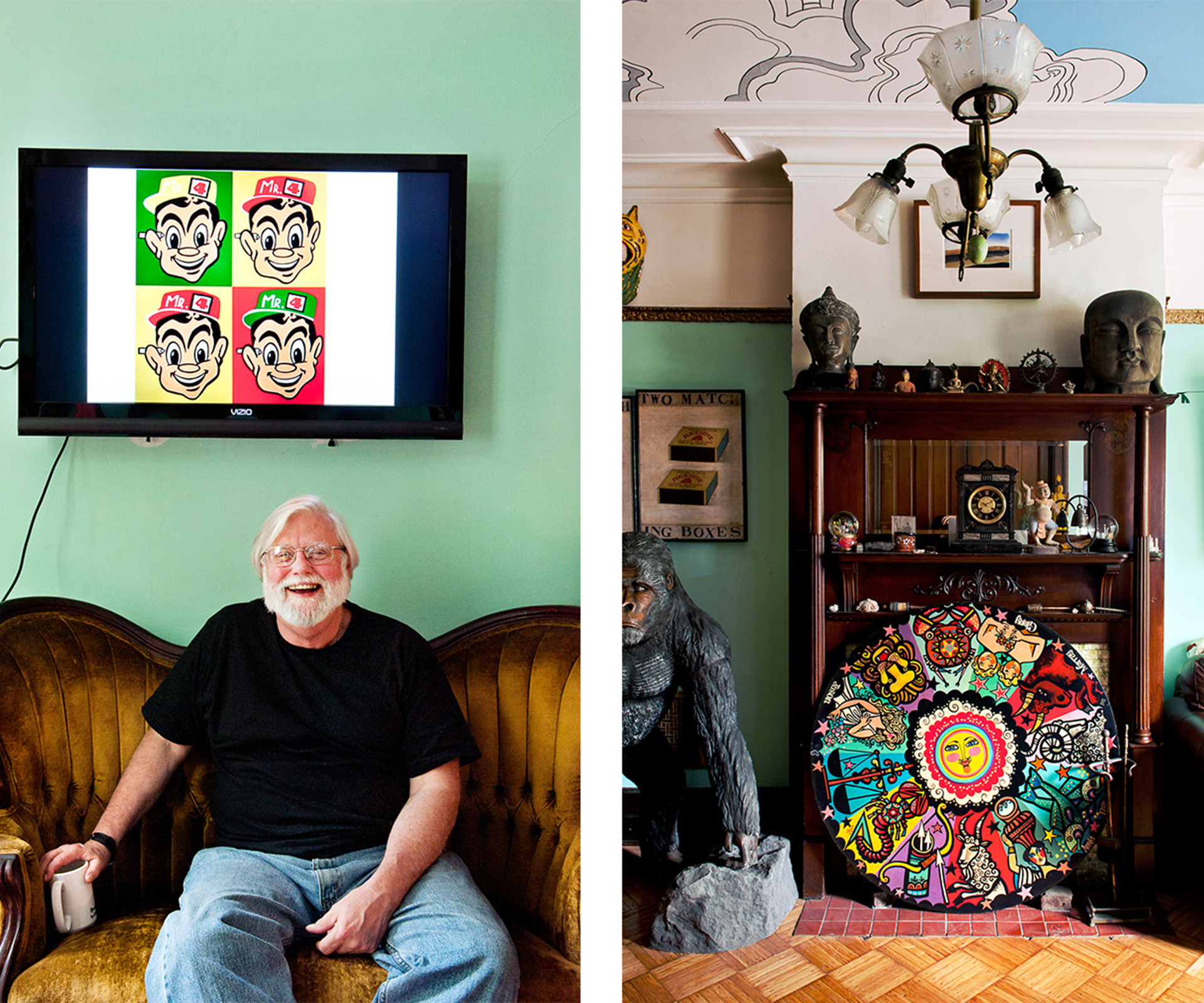
Bill Shumaker’s art-filled Brooklyn home
Get Bill Shumaker talking, and chances are there are few subjects that will remain untouched over the next few hours. “I’ve had several reincarnations in this body,” he chuckles at one point, before embarking on a not-so-brief potted history of Bill. Though a die-hard New Yorker, born and raised in the Bronx, over the course of his 70-odd years, Shumaker has also lived in Auckland, London, Vietnam and Northern Cyprus, and has degrees in advertising, geography and tourism.
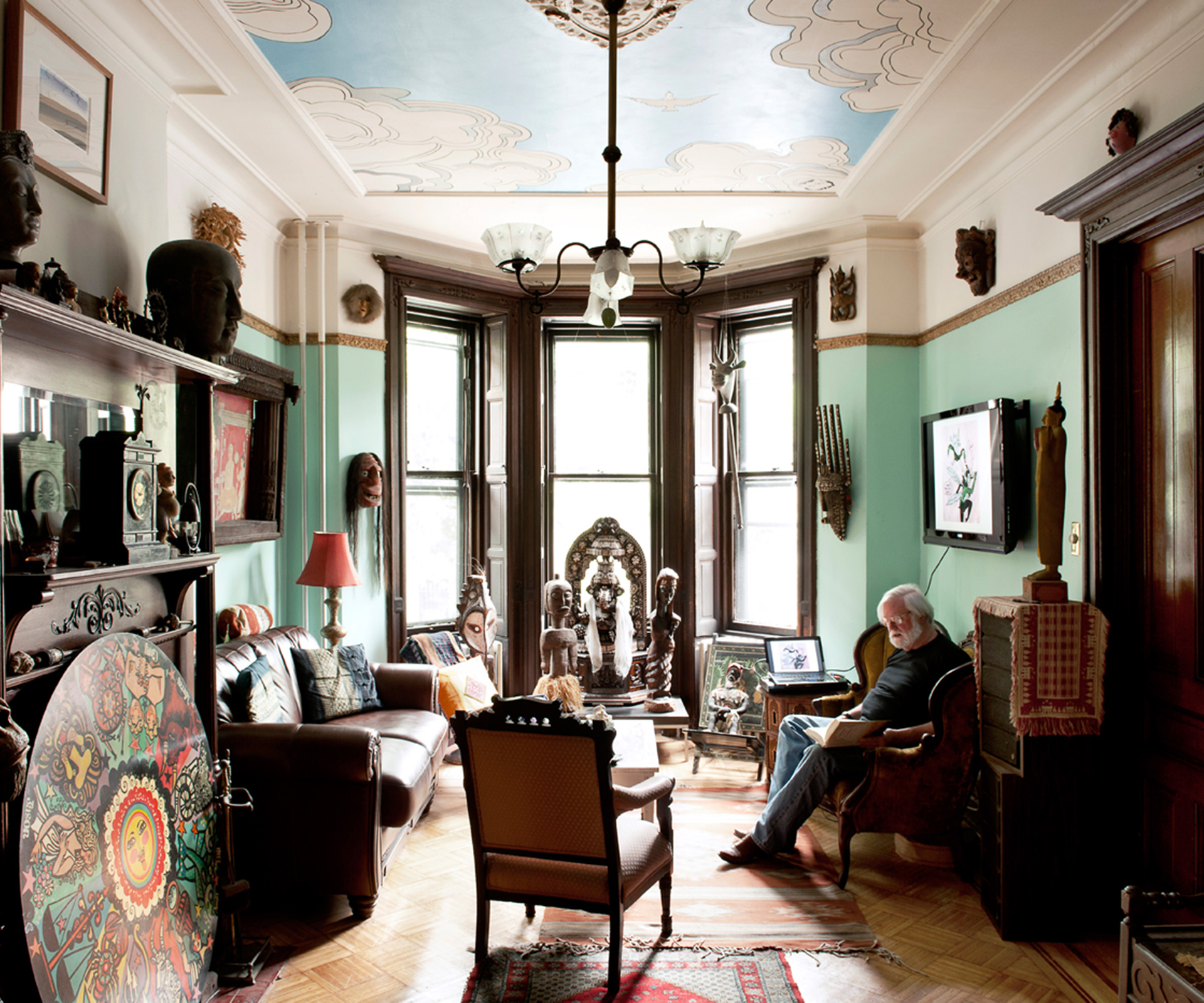
He recalls an anecdote from his first job, in the Mad Men era of New York advertising. His boss was reminiscing about an opportunity he’d had, early in his own career, to move to Berlin. “He said he’d always wondered how his life would have turned out if he’d taken that path. And I thought, that sure as hell is not going to be me!”
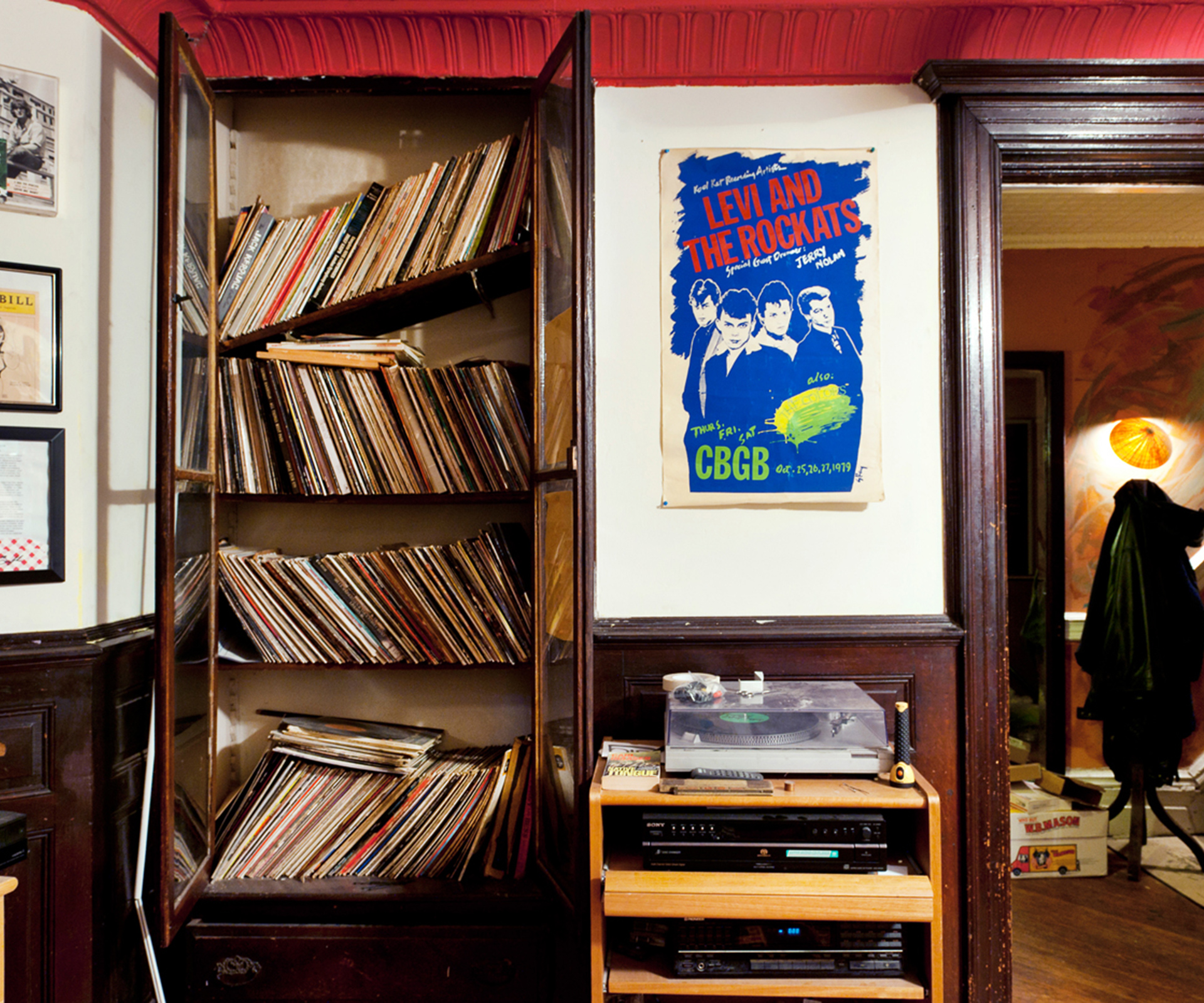
So, after working as an account executive, he became a cook, firstly for the London institution Wheelers of St James, then setting up a series of restaurants in Florida and New York before becoming an instructor at the New York Restaurant School.
Through his hospo buddies, his presence on New York’s burgeoning rock scene, and some after-hours socialising around the bar, he eventually came to manage the iconic Bowery venue CBGB in its punk heyday, working with acts including Patti Smith, Blondie, Talking Heads and Television. Though he says the role was never dignified with something as pedestrian as a job title, CBGB’s owner, Hilly Kristal, is his daughter’s godfather, and his guest room is still papered with flyers and posters from that era.
[quote title=”He managed iconic Bowery venue CBGB in its punk heyday” green=”true” text=”working with acts including Patti Smith, Blondie, Talking Heads and Television” marks=”true”]
Oh yeah, and then there was that time in the early 1970s that Shumaker and his late wife, Ginny, ended up living in the Auckland suburb of Titirangi after catching a $50 flight on assisted passage from Los Angeles to New Zealand so he could work as an account executive for the McCann Erickson advertising agency.
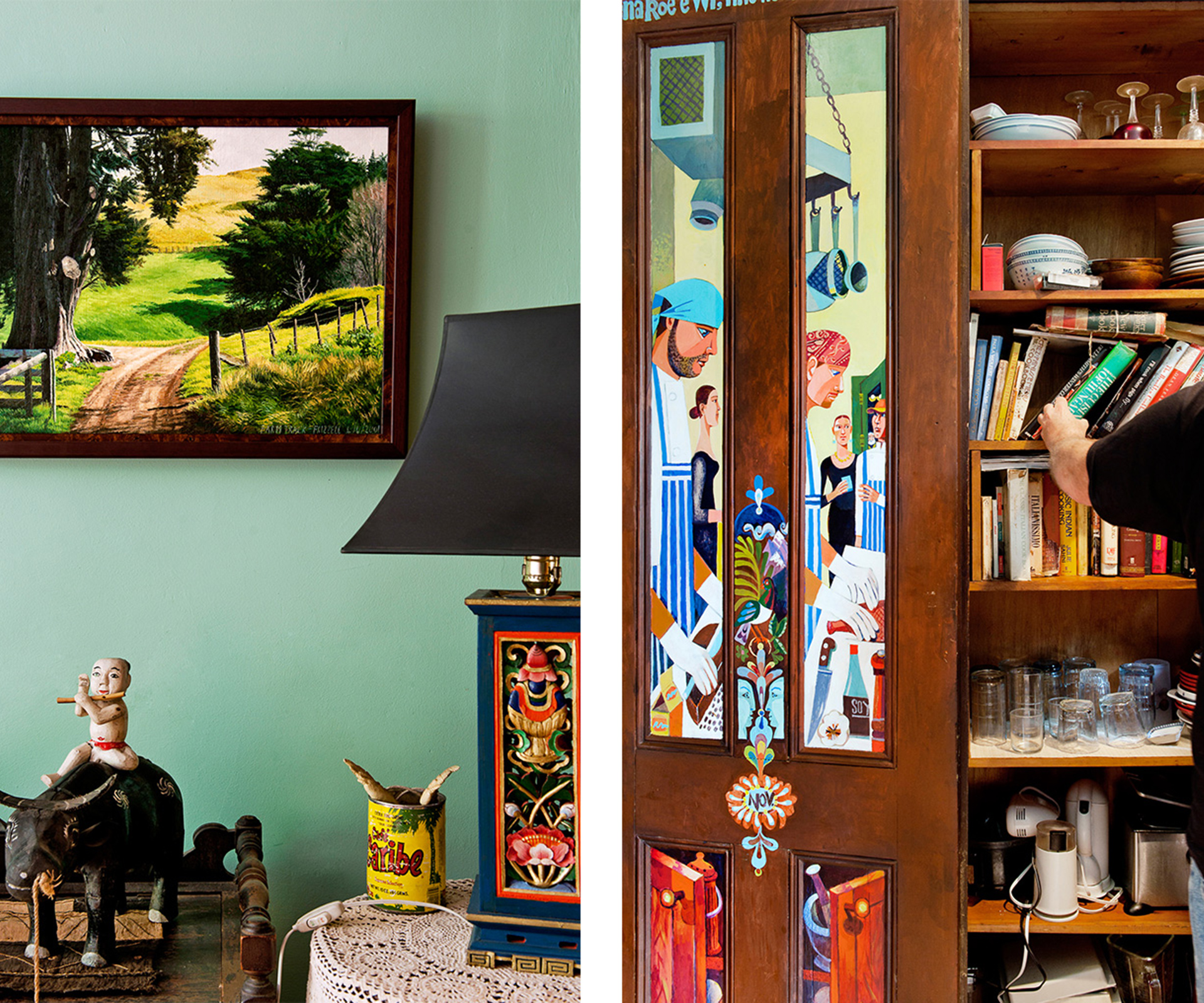
The couple quickly fell in with the local art crowd. “It was very much self-entertaining, because there wasn’t much to do,” he says, painting a somewhat nostalgic image of men with long hair, women in short skirts, and dreadful food, like the “pizza” he once saw in an out-of-town restaurant, devised using a pie crust topped with Wattie’s spaghetti. “When I first got [to Titirangi],” he remembers, “people went overboard in adopting styles – it was like an idealised hippie lifestyle. There was a real feeling of ‘us and them’. For me, at the time, it was the perfect place to be.”
Shumaker’s social circle contained the artists Dick Frizzell, Murray Grimsdale – both then still working in advertising – and Craig Murray-Orr. All have remained close friends over the past four decades, and their work is dotted among the curiosities that crowd Shumaker’s Park Slope brownstone in Brooklyn, New York.
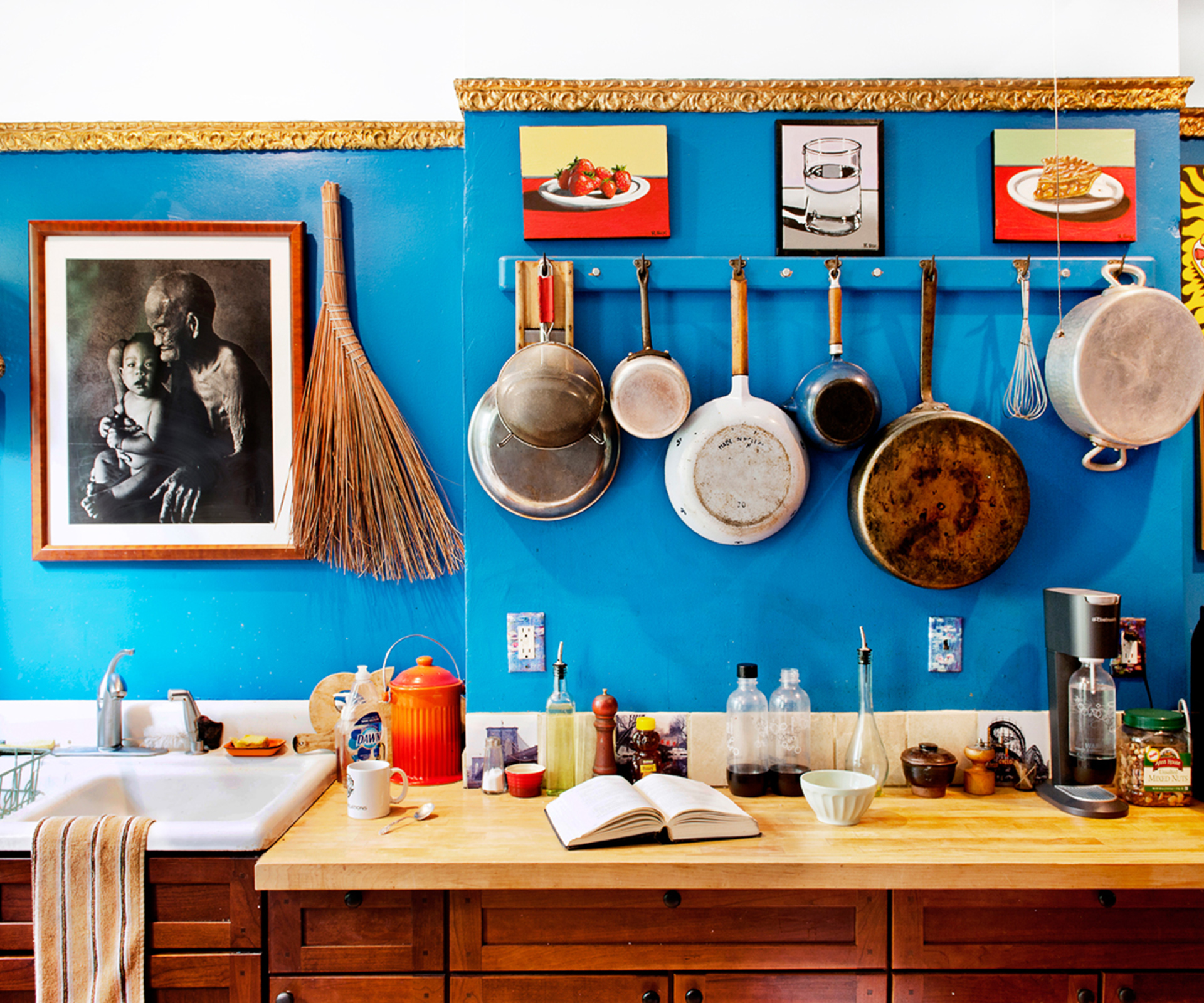
Flanked by the collection of religious figures and masks from Haiti, Sri Lanka, India, Tehran and Thailand, a wall-mounted flat-screen shows a digital exhibition of Frizzell’s work. Shumaker’s personal collection includes a number of the artist’s paintings: ‘Two Matching Boxes’ (1971) and ‘Farm Track’ (2001) – two of the few titled pieces – sit by a life-size resin gorilla that dominates the central living area.
Frizzell’s son Josh recently visited and contributed a new piece to the growing collection of drawings, paintings, photographs and sculptures, which also includes the door from an old Ford Mustang hanging in Shumaker’s bathroom. He found it on the side of the road in 1973 and took a shine to it. Ever since, he has insisted his artistic guests reinterpret it in their own style. Josh, an advertising director, made a short film.

“It’s a gallery of friendship,” Shumaker says. “Sometimes the whole room almost overwhelms me – my thoughts go way beyond the work, to the person that did it.”
Grimsdale is also a regular fixture. One of his self-portraits hangs in the study (along with a Maori tiki statue), and he has worked on a series of decorative projects around the place, including the large, circular piece in the lounge made from a tabletop, and the kitchen’s cabinet doors. These hark back to Shumaker’s cooking days and were taken from sketches the artist did at a nearby restaurant, Applewood, and then painted to include likenesses of his daughters and two tiny cameo appearances by Shumaker and himself, peeking through the restaurant’s doors.
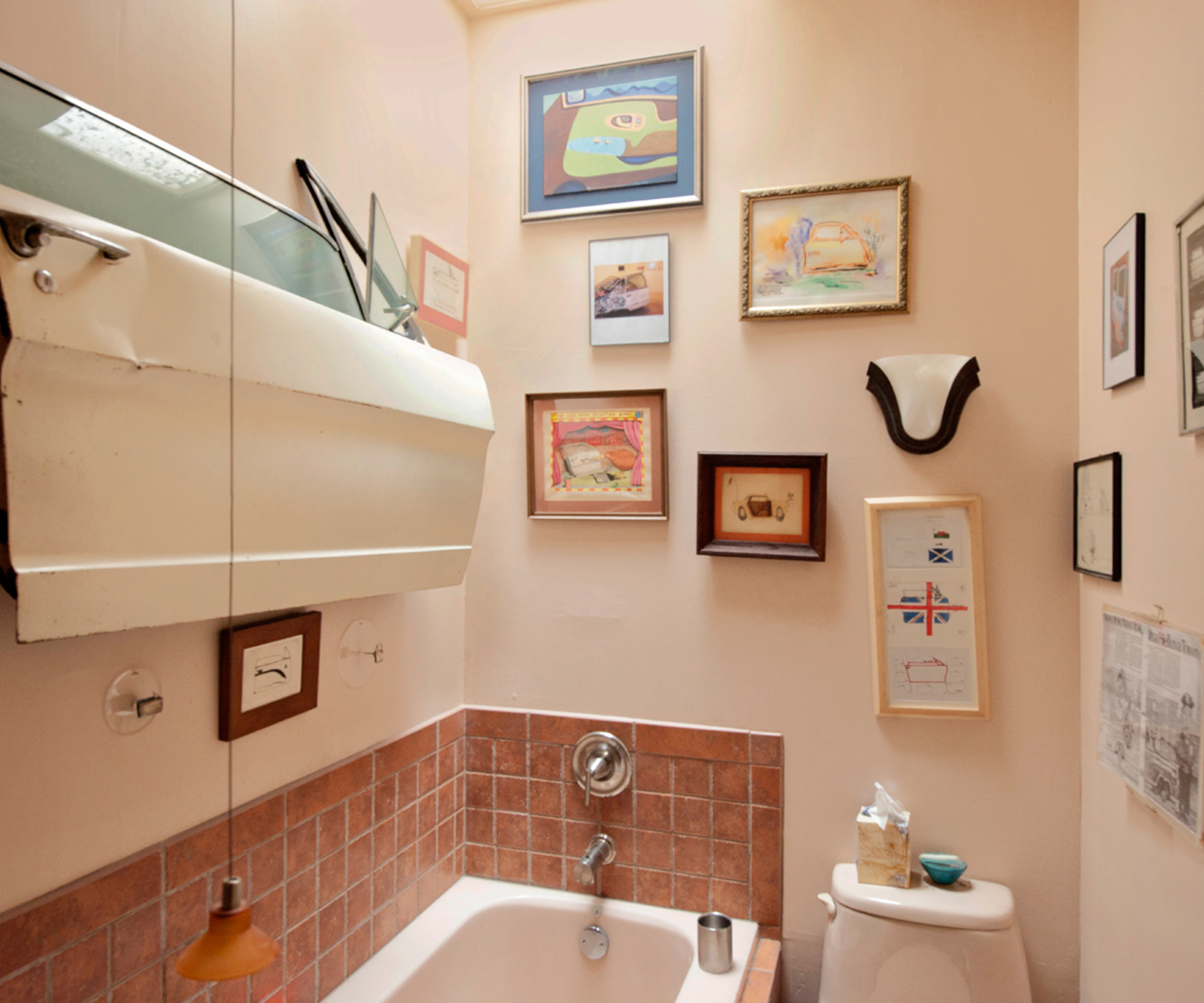
Grimsdale’s next commission is the set of doors in the lounge – one of the few empty surfaces remaining. Even the ceilings are painted; the lounge by British artist Malcolm Poynter, and the study by former punk rock musician, now artist, Robert Box.
Shumaker bought this three-storey building in 1975. “We got lucky,” he says. “It was a very different world back then.” He is only the third owner, after several generations of “rock-solid working-class Irish” who, fortunately for him, failed to be moved by the spirit of the times to gut the house in the 1950s, as many others did. The house has thus retained period details dating back to the 1890s, such as the beautiful wooden scrollwork in the living room, plaster moulding and a central dumbwaiter.
[quote title=”Shumaker bought this three-storey building in 1975″ green=”true” text=”“We got lucky,” he says” marks=”true”]

Like him, the neighbourhood has had several reincarnations over the course of its life, as Shumaker will tell you if you happen to take one of the tours of Park Slope he runs as a volunteer with Big Apple Greeters. It started as a wealthy area in the late 19th century and declined over the 20th, before becoming the home of chi-chi bohemia that it is now, where brownstones formerly inhabited by factory workers come with multimillion dollar price tags.
“People tell me I could make a fortune selling this place now,” he says. “And I guess I could. But, seriously, why would I want to live anywhere else?”
Q&A with Bill Shumaker
Bill, what is it like to live with all this art?
One of my favourite places in New York is The Frick Collection [the Frick mansion belonged to turn-of-the-century industrialist Henry Clay Frick, and was opened as a public art museum in 1935]. It’s one of those museums that is more than a museum. Being a tour guide, I get to go to these places after hours, and on one occasion I was left there on my own, with the art all around me. I felt like Frick. I can relate to him. Art is a part of my life.
Is there a method to the madness?
Things just evolved over time. Murray [Grimsdale], who is a very un-commercial artist, changed my concept of decoration. So it’s not only on the walls and the ceiling, but surrounding me.
You’ve grouped certain objects together?
The masks are in most cases a symbol of religion, or used for religious ceremonies. Everything in here is religious. The man carving the Buddha, for example, had been carving that same Buddha for 20 years. And is every one slightly different? Yes! He’s like a great medieval craftsperson. You watch him work and it’s like a great actor playing the same role over its thousandth time, and it still has meaning. So, none of these things are mass-produced, that’s the grouping in this room.
Words by: Sam Eichblatt. Photos by: Emily Andrews.
[related_articles post1=”45987″ post2=”45478″]




